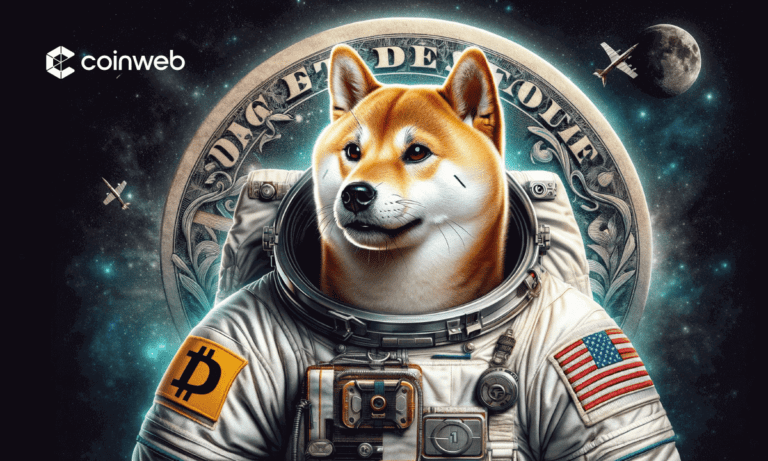TLDR
The digital vault allows a wrapped cryptocurrency token to function on other blockchains while maintaining its value, similar to a special version of a regular token.
Wrapped tokens are helpful because they make it easier and cheaper to do transactions between different blockchains instead of using each token separately. This means that users can use multiple blockchains on a single platform, which gives them more options and flexibility.
What is a wrapped token?
The simplest explanation of wrapped tokens is that they are pegged tokens that can function on other blockchains and maintain the same value as the native token.
When you think of wrapped tokens, think of yourself in a new country with a different currency. To function in that country, you must exchange your old money (e.g., Dollars) with the new one (e.g., Pounds) in equivalent values.
Essentially, three factors constitute the wrapped token system;
- The User – That is you with your original currency (the native token)
- The Custodian – The Bank where the exchange happens (the third-party merchants)
- The New Blockchain – The new Country you have just arrived and want to shop in.
An interesting example of a wrapped token is the wrapped Bitcoin (wBTC), the ETH-20 version of the BTC. The wBTC can function on the ETH blockchain to the equivalent amount of 1 BTC. This is essentially how wrapped tokens work.
How do wrapped tokens work?

Wrapped tokens are created through a simple process known as “Minting.” This process involves depositing the native token (e.g., Bitcoin) into a digital vault or holding space, which then issues the corresponding wrapped token (e.g., WBTC) to the user for use on other blockchains.
The minting process can also be reversed, allowing users to unwrap or “burn” their wrapped tokens and retrieve the original.
Wrapped tokens function as a bridge between blockchains that would otherwise have no means of interaction or connection. They give you access to one blockchain as a base of operation while holding on to a tokenized version form of the original asset.
Elements Of The Wrapping Process
The wrapped token system consists of vital elements that maintain the token standards. These elements include:
- An Underlying Asset: A wrapped token is an underlying asset that provides value for any native token, mostly crypto tokens. Still, it can also be traditional assets or Non-Fungible Tokens (NFT).
- Smart Contract: This is where the wrapping of any happens. These contracts dictate the rules and processes for wrapping the tokens, including how they are created, function, and can be burnt or unwrapped.
- Blockchains: Every token functions on its blockchain where it can function independently, like we have Bitcoin blockchain, Ethereum Blockchain, etc. Your choice of blockchain can affect the functionality and capabilities of the wrapped assets.
- Token Standards: Every wrapped token is subject to the rules of a token standard. A good example is the ERC-20 on the Ethereum blockchain. These standards lay down rules on the capabilities and limitations of the tokens.
- Digital Asset Exchange: This is where you can sell, buy, trade, or liquidate your wrapped tokens. Your choice of platform can also affect the number of things you are and aren’t allowed to do.
The Potentials Of Wrapped Tokens
There are many developmental opportunities available in wrapped crypto assets, some of which include but are not limited to:
- Traditional Assets: Wrapped tokens can also represent conventional assets like real estate or stocks, which have the potential to create new investment opportunities and the ability to trade and earn more efficiently and securely.
- Non-Fungible Tokens (NFT): NFTs are unique digital assets representing ownership of a specific item or asset. Wrapping NFTs can allow for new opportunities and more diverse ways to increase your income.
- Commodities: The ability to wrap traditional commodities like gold, silver, etc., will create more flexible opportunities for making money.
Wrapped Token On The Ethereum Blockchain
Most tokens created can only function on their blockchain and nowhere else. For example, only the ETH can work on the Ethereum blockchain because it is independent.
However, the regular ETH was not compliant with the new ETH-20 system because it existed before ETH-20. Consequently, a wrapped version of the ETH was created: the wrapped Ether (wETH).
Another type of wrapped token used on the Ethereum Blockchain is the wrapped BTC, which allows users to hold BTC to the equivalent value of ETH and earn at a fixed interest rate.
Types of wrapped tokens
Wrapped tokens come in two types: Cash-Settled Tokens and Redeemable tokens. You cannot unwrap, burn, or reverse Cash-Settled tokens to their original crypto value, but you can unwrap Redeemable tokens.
If you have a Cash-Settled wBTC, it cannot be converted back to its original Bitcoin form. However, if you have a Redeemable wBTC, you can reverse it to Bitcoin whenever needed.
There is an ongoing dispute on whether or not Tether (USDT) is a wrapped token for fiat currencies. While some believe it is because it holds the exact amount of value as a Dollar, it doesn’t have the same value as a fiat currency in its reserve.
This reserve usually has a fixed income and consists of other valuable assets like cash and cash equivalents from investments and loans.
Security Risks Of Wrapped Tokens
Wrapped tokens have become increasingly popular in DeFi because of their flexibility and interoperability between blockchains.
It allows its users to conduct various transactions, such as lending and borrowing, trading, and yield farming. Additionally, wrapped tokens can leverage assets and collect loans from other platforms.
However, it’s important to note that wrapped tokens are not without risks, as they still function in the same volatile market conditions as the original token.
Additionally, wrapped tokens also rely on the security of the smart contract and the platform on which it’s built.
Therefore, it’s essential to do thorough research before investing in wrapped tokens.
Another significant risk here is the corruption chain or market corruption. This essentially means the deterioration of one market that eventually affects other markets.
In the cryptocurrency world, the more efficient a platform is, the higher the risk of corruption. This means that if one vault is corrupted, every other portfolio connected to this platform suffers the threat of liquidation.
Market corruption is not a new phenomenon; it has happened several times. However, they have been more familiar with pegged stablecoins like USDT or UST in their failure to meet the general technical standard.
Despite these numerous failed cycles, there is yet to be a failure of a wrapped token vault audited by a proof-of-reserve standard.
Trusted partners
Risks Involved In Wrapped Tokens
- It’s a centralized Asset: The wrapped token system’s most significant advantage is its risk. Centralization requires that you trust the custodian of the asset. If this custodian is dishonest and chooses to give the wrapped Bitcoin token, for example, to someone else, your wBTC becomes worthless. In this case, all your centralized and decentralized exchanges must be insured or backed up by guarantees.
- Failure of the digital vault you use for exchange fails, you will incur some liquidity crisis. This is where cross-chain transactions become a disadvantage rather than an intelligent investment.
- High Minting Fees: Thanks to high gas fees, the minting process of wrapped tokens can also be relatively costly and create spillage.
Benefits Of Investing in Wrapped Tokens
- Lower Fees: One of the significant challenges of transacting on the Ethereum Blockchain is that increased traffic can lead to high gas fees. However, with the wrapped Ether and other wrapped tokens, token holders can now transact on diverse blockchains with more affordable transaction fees.
- Increased Transaction Speed: Working with different crypto tokens on their respective blockchains to perform a single transaction can take time and effort. However, using wrapped tokens allows you to perform transactions on a single blockchain, saving you much time.
- Liquidity: Wrapped tokens help increase capital efficiency and liquidity in centralized and decentralized exchanges. Instead of isolated liquidity of each token, the wrapped versions allow for more connection across multiple chains.
Should You Invest In Wrapped Tokens?
As of April 2021, the amount of staked Ethereum on the Ethereum 2.0 deposit contract had reached over four million tokens, more than $11 billion. After one year of its introduction, approximately $800 million of Bitcoin was converted to wrapped assets.
K33 research also estimated that a whopping 1% of Bitcoin’s circulating supply of 18.73 million was used in DeFi through wrapped Bitcoin tokens in 2021. These numbers matter because they indicate a hungry and growing market for interoperability.
For the longest time, the Cryptocurrency world suffered from the lack of cross-chain connections, and with the increase in blockchains, the need to transact cross-chains through smart contracts increased.
Creating wrapped tokens helps with faster connection, transaction, and flexibility. In the foreseeable future, this is why wrapped tokens and assets will continue to be sought after with more efficiency and quicker processes.
This means there will always be a market for wrapped assets in cryptocurrency.
Conclusion
Wrapped crypto tokens are an excellent way to create connectivity across the decentralized financial system, with wrapped tokens giving investors access to the use of digital assets in ways they had never known.
It represents the growing need for humans to find a way around decentralized finance and achieve interconnectivity for better profit.
WBTC is a token that has been created by wrapping Bitcoin onto the Ethereum blockchain. This allows Bitcoin to be used in various DeFi applications and it can be bought, sold and traded on digital asset exchanges. In essence, WBTC is a representation of Bitcoin that is blockchain-based.
A major issue with wrapped BTC tokens is the requirement to rely on the custodian who holds the original asset. In the event that the custodian unlocks and transfers the actual Bitcoin to another party, the holders of the wrapped BTC token that is ERC-20 compatible would end up with a worthless asset.















